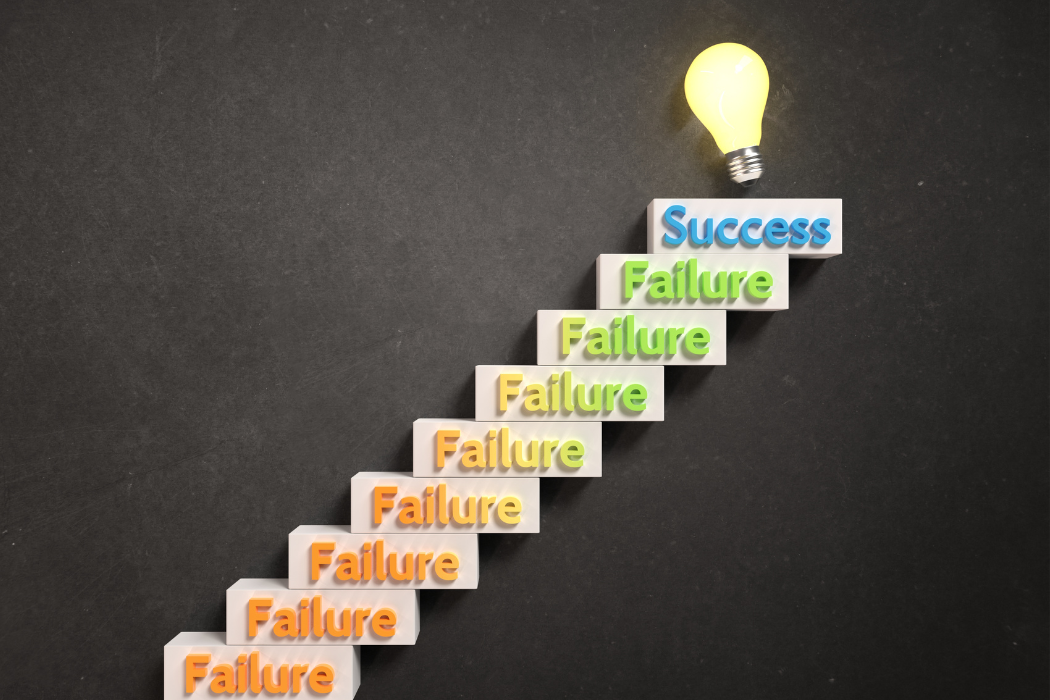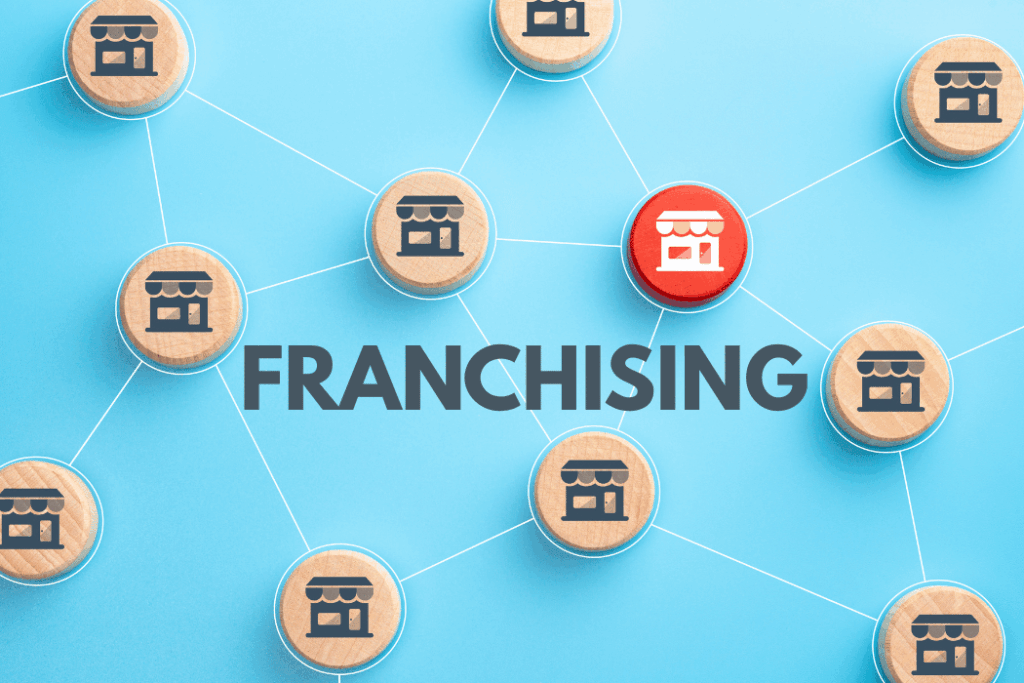
A Two-Part Series on Transforming Setbacks into Strengths
In this two-part series, we explore the counterintuitive relationship between failure and startup success. Part 1 uncovers why some of today’s most successful companies credit their early failures as crucial stepping stones, backed by a revealing case study and expert insights. Part 2 then provides a practical playbook for implementing these lessons, offering concrete strategies for building resilient teams and systems that transform setbacks into competitive advantages.
Whether you’re a founder navigating current challenges or an entrepreneur preparing for future obstacles, this series will reshape how you view failure and provide actionable frameworks for harnessing its hidden potential.
Now reading: Part 1 – Learning from Failure: The Hidden Key to Startup Success
In the high-stakes world of startups, failure is more than just a possibility—it’s practically a rite of passage. While the oft-cited statistic that 90 percent of startups fail might sound discouraging, it masks a deeper truth: the most successful companies often emerge stronger from the ashes of their initial missteps. Take Slack, now valued at billions, which began as a failed gaming company before pivoting to become the workplace communication giant we know today.
The counterintuitive reality is that conflict and failure, far from being the enemies of success, often serve as its catalysts. In Silicon Valley’s elite circles, a failed startup on a founder’s resume isn’t seen as a black mark—it’s viewed as valuable experience, a badge of honor that signals resilience and learning agility. This perspective represents a fundamental shift in how we understand business success, particularly in the startup ecosystem where rapid iteration and “failing fast” have become core principles.
But why do setbacks and internal tensions, traditionally viewed as business killers, sometimes act as secret weapons for startup success? The answer lies in how these challenges forge stronger teams, sharper strategies, and more resilient business models. In an environment where innovation is currency and adaptation is survival, the ability to extract wisdom from failure and productive solutions from conflict can mean the difference between becoming another statistic and joining the coveted 10 percent of startups that thrive.
The Role of Failure in Learning and Growth
“You’re going to fail. It’s inevitable. It’s just part of the process,” says Andrew Plato, a veteran entrepreneur, author, and cybersecurity expert who founded one of the world’s first cybersecurity companies. After decades of experience and a successful exit in 2022, Plato emphasizes that failure isn’t just unavoidable—it’s invaluable. This perspective challenges the traditional narrative that successful entrepreneurs are those who simply avoid mistakes.
The Value of Trial and Error
In today’s fast-paced startup ecosystem, the ability to test assumptions quickly and learn from mistakes has become crucial for innovation. The modern “DevOps concept,” as Plato describes it, embraces the principle of failing quickly: “Just try things and just keep doing them until you find what works and what clicks.”
This approach represents a fundamental shift in how successful companies operate. Rather than spending months or years perfecting a product in isolation, modern startups are encouraged to release early versions, gather feedback, and iterate rapidly. This methodology not only accelerates learning but also prevents companies from investing too heavily in unproven concepts.
“If you have a great idea, then go try to sell it to people,” Plato advises. “Because if it’s a great idea and you have that message really well done, then people should want to buy it.” This practical approach to validation helps entrepreneurs quickly identify what works and what doesn’t, saving valuable time and resources.
Adapting Through Setbacks
Some of the most dramatic business transformations have emerged from apparent failures. “Nintendo, the company we all know and love for Mario and all that, started out as a ramen noodle company,” Plato points out. “Slack, the company where we all chat through it, started out as a video game. YouTube was a dating site.” These pivots weren’t just minor adjustments—they were fundamental transformations driven by the willingness to acknowledge when initial strategies weren’t working.
The key to successful adaptation lies in the speed and decisiveness with which companies respond to market feedback. As Plato explains, “You have to be willing to make those changes. And sometimes those changes are really painful. They include things like getting rid of people who are not working out in your company. They include things like changing your entire product to be something different than what it is.”
This willingness to make difficult decisions and radical changes often distinguishes successful startups from those that stagnate or fail. It requires not just courage but also a keen understanding of market dynamics and customer needs.
Building Resilience
The key to building resilience lies in how entrepreneurs respond to failure. “When you fail, it is super important that you zoom in on that failure,” Plato advises. “You figure out why you failed and you figure out what you need to change.” This intimate relationship with failure becomes a cornerstone of entrepreneurial growth.
Building resilience isn’t just about bouncing back from failure—it’s about developing a systematic approach to learning from it. This includes:
- Analyzing failures objectively without emotional attachment
- Identifying specific factors that contributed to the failure
- Developing concrete action plans for improvement
- Maintaining perspective on the larger mission
“I think really great founders, at least the founders I’ve known, tend to have this sort of intimacy with failure,” Plato observes. “Like the minute something goes wrong, they want to know why. They want to understand that failure. They want to dig into it because they want to get better.”
Case Studies of Startups That Thrived Through Failure
The transformation stories of companies like Slack, Nintendo, and YouTube demonstrate how radical pivots can lead to unprecedented success. These companies didn’t just survive their failures—they used them as launching pads for entirely new directions.
Slack: From Gaming Failure to Communication Giant
Plato specifically highlights Slack’s journey as a testament to the power of pivoting. The company began as a chat feature within a game called Glitch and has become a leading corporate team collaboration tool. This transformation wasn’t just a minor adjustment—it represented a complete reimagining of the company’s core purpose. The team took what they learned from their failed gaming venture, particularly the internal communication tools they’d built for their development team and turned it into one of the most successful workplace communication platforms in history.
This remarkable transformation illustrates several key principles:
- The willingness to completely abandon an initial business model
- The importance of recognizing new opportunities
- The value of maintaining entrepreneurial flexibility
- The courage to enter entirely new markets
These pivots weren’t just about changing products—they represented fundamental shifts in company vision, market understanding, and organizational identity.
Key Success Patterns
Analyzing these transformations reveals common patterns:
- Willingness to abandon sunk costs
- Strong focus on market feedback
- Ability to recognize hidden opportunities
- Quick execution once new direction is identified
- Maintenance of core team strengths through transitions
Having explored how companies like Slack transformed their failures into springboards for success, it’s clear that setbacks aren’t just inevitable—they’re instrumental to innovation. But understanding the value of failure is only half the equation. In Part 2 of this series, we’ll dive into the practical strategies and mindset shifts that enable startups to actively harness the power of failure and conflict. We’ll explore specific techniques for fostering constructive tension, building resilient teams, and creating systems that turn setbacks into stepping stones for growth.












